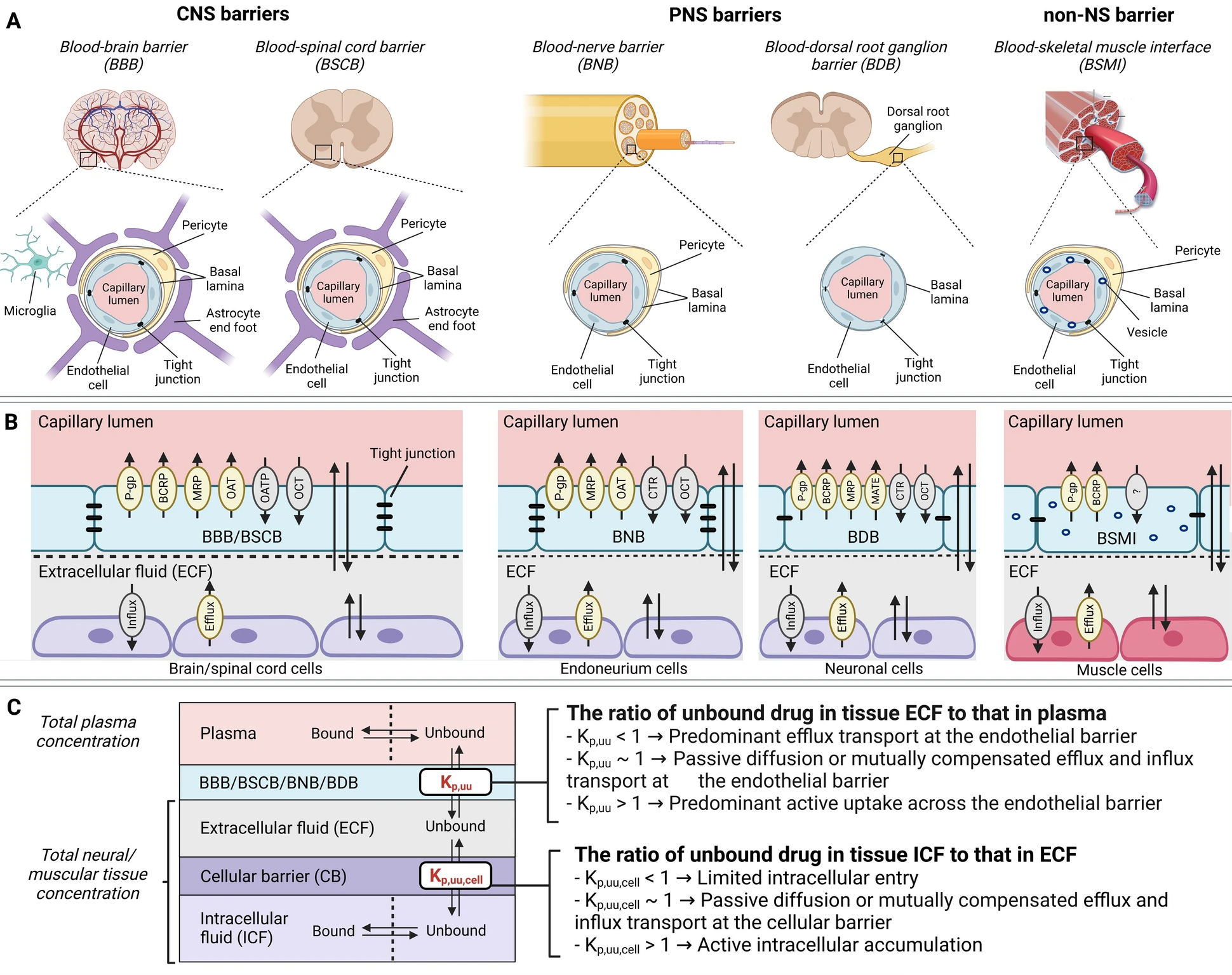Analysis of the contributing role of drug transport across biological barriers in the development and treatment of chemotherapy-induced peripheral neuropathy
Hu, Y., Girdenyté, M., Roest, L. et al.
Fluids Barriers CNS 21, 13 (2024).
https://doi.org/10.1186/s12987-024-00519-7
Abstract
Background: Chemotherapy-induced peripheral neuropathy (CIPN) represents a major unmet medical need that currently has no preventive and/or curative treatment. This is, among others, driven by a poor understanding of the contributive role of drug transport across biological barriers to target-site exposure.
Methods: Here, we systematically investigated the transport of 11 small-molecule drugs, both, associated and not with CIPN development, at conventional (dorsal root ganglia, sciatic nerve) and non-conventional (brain, spinal cord, skeletal muscle) CIPN sites. We developed a Combinatory Mapping Approach for CIPN, CMA-CIPN, combining in vivo and in vitro elements.
Results: Using CMA-CIPN, we determined the unbound tissue-to-plasma concentration ratio (Kp,uu) and the unbound intracellular-to-extracellular concentration ratio (Kp,uu,cell), to quantitatively assess the extent of unbound drug transport across endothelial interfaces and parenchymal cellular barriers of investigated CIPN-sites, respectively, in a rat model. The analysis revealed that unique pharmacokinetic characteristics underly time-dependent accumulation of the CIPN-positive drugs paclitaxel and vincristine at conventional (dorsal root ganglia and sciatic nerve) and non-conventional (skeletal muscle) CIPN sites. Investigated CIPN-positive drugs displayed intracellular accumulation contrary to CIPN-negative drugs nilotinib and methotrexate, which lacked this feature in all investigated tissues.
Conclusions: Hence, high unbound drug intracellular and extracellular exposure at target sites, driven by an interplay of drug transport across the endothelial and parenchymal cellular barriers, is a predisposing factor to CIPN development for CIPN-positive drugs. Critical drug-specific features of unbound drug disposition at various CIPN- sites provide invaluable insights into understanding the pharmacological/toxicological effects at the target-sites which will inform new strategies for monitoring and treatment of CIPN.

Figure 1. Anatomical and functional differences between the CNS, PNS, and SM (non-NS) barriers, with an overview of key PK parameters for the evaluation of unbound drug exposure. […]
Rights and permissions
Open Access This article is licensed under a Creative Commons Attribution 4.0 International License, which permits use, sharing, adaptation, distribution and reproduction in any medium or format, as long as you give appropriate credit to the original author(s) and the source, provide a link to the Creative Commons licence, and indicate if changes were made. The images or other third party material in this article are included in the article’s Creative Commons licence, unless indicated otherwise in a credit line to the material. If material is not included in the article’s Creative Commons licence and your intended use is not permitted by statutory regulation or exceeds the permitted use, you will need to obtain permission directly from the copyright holder. To view a copy of this licence, visit http://creativecommons.org/licenses/by/4.0/. The Creative Commons Public Domain Dedication waiver (http://creativecommons.org/publicdomain/zero/1.0/) applies to the data made available in this article, unless otherwise stated in a credit line to the data.
Keywords
Chemotherapy-induced peripheral neuropathy, CIPN, Blood–nerve barrier, Blood–dorsal root ganglion barrier, Kp,uu, Kp,uu,cell, Neuropharmacokinetics

